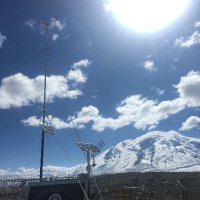
Backpirch Weather
@backpirchcrew
We provide advanced analysis and live coverage of tropical cyclones worldwide, from the Gulf of Mexico to the South Pacific. Follow for hourly updates.
ID: 1693295976562192384
http://backpirchweather.com 20-08-2023 16:17:32
6,6K Tweet
5,5K Followers
40 Following


















